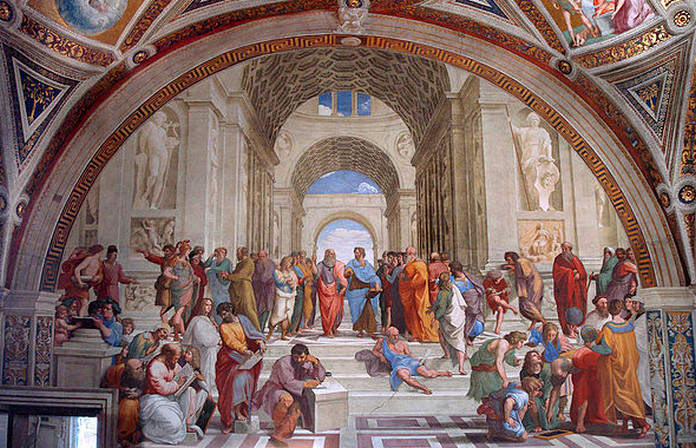Raphael’s Frescoes

Villa Farnesina is a suburban Renaissance mansion and perhaps the most underrated museum in all of Rome. It was built for Agostino Chigi, Treasurer of Pope Julius II, who commissioned Raphael to paint elaborate frescoes in the airy rooms. Raphael’s 16th-century fresco Cupid and Psyche, Triumph of Galatea adorns the ceiling of the loggia (first floor) of the Palazzo and is the villa’s most famous work.
Bernini’s Apollo and Daphne
This life-size marble statue in the Borghese Gallery shows Apollo trying to escape with Daphne in his arms. Just then, his father transforms into a laurel tree and tries to rescue Daphne. The fingers that turn into leaves are astonishingly beautiful, demonstrating his talent for Bernini despite his youth (he was only 24 when he started working on this statue).
Sarcophagus of the Spouses
Housed in the Villa Giulia National Etruscan Museum, this work depicts a reclining couple at a communal feast. The Etruscans had an emphasis on the afterlife and sought to ensure that the deceased were comfortable in their resting place, creating elaborately painted tombs (like Tarquinia) and elaborate sarcophagi.
Caravaggio’s Paintings in the Contarelli Chapel
Caravaggio is one of the most famous Baroque painters in Italian history. A series of paintings from 1599 to 1600 depict the life of the Apostle Matthew: The vocation of St. Matthew, the inspiration of St. Matthew, and the martyrdom of St. Matthew.
Borromini’s Prospettiva
This optical illusion by Borromini is a sensory experience. This unexpected gem is part of Palazzo His Spada, which houses his 17th-century Spada Family His Picture His Gallery, a small collection of works by artists such as Titan, Guercino, and Gentileschi.
Michelangelo’s Moses
Moses is the central figure in what was interpreted by Pope Julius II as “horns” in the 16th century). Art critics claim that Moses is one of Michelangelo’s most popular works. According to legend, while completing her statue, Michelangelo, satisfied with her achieved realism, slapped her and ordered her to speak.
Mosaics in Santa Maria in Trastevere
Santa Maria in Her Trastevere is not only known for being one of Rome’s oldest churches, but her impressive 12th-century Byzantine mosaic by Pietro Cavallini depicts the life of the Virgin Mary. Also known for drawing An inscription on the Bishop’s Throne states that this was the first church in Rome dedicated to Mary, mother of Jesus, but some argue that this privilege belongs to the Basilica of Santa Maria Maggiore.
Gallery of Mirrors, Palazzo Doria Pamphili
The gallery resembles Versailles in miniature, but without the crowds. The Doria Pamphili family’s incredible private collection of his art, including works by Raphael, Titian, Caravaggio, Velázquez, and others, is regularly exhibited.
Boxer At Rest
This Hellenistic Greek bronze sculpture of a seated boxer is believed to date from 300 BC to his 50th year. It is located in Palazzo Massimo, one of his four national museums in Rome. The Boxer at rest is one of the finest examples of bronze sculpture that has survived from antiquity. Artifacts from this era are rare as they can easily melt and turn into new objects.
Bernini’s Ecstasy of Saint Theresa
High Rome One of the finest examples of her Baroque is that Teresa of Avila, a Spanish mystic and Carmelite nun, in a moment of religious ecstasy with an angel, exclaimed, “Pain… so groaning It shows how I felt that I raised But it was so outstanding that I didn’t want to let it go. It was designed and finished by Gian Lorenzo Bernini, the leading sculptor of the time. Bernini sculpted the perimeter of the chapel with marble, stucco, and paint. It is generally regarded as one of his masterpieces of Baroque sculpture in High Rome.